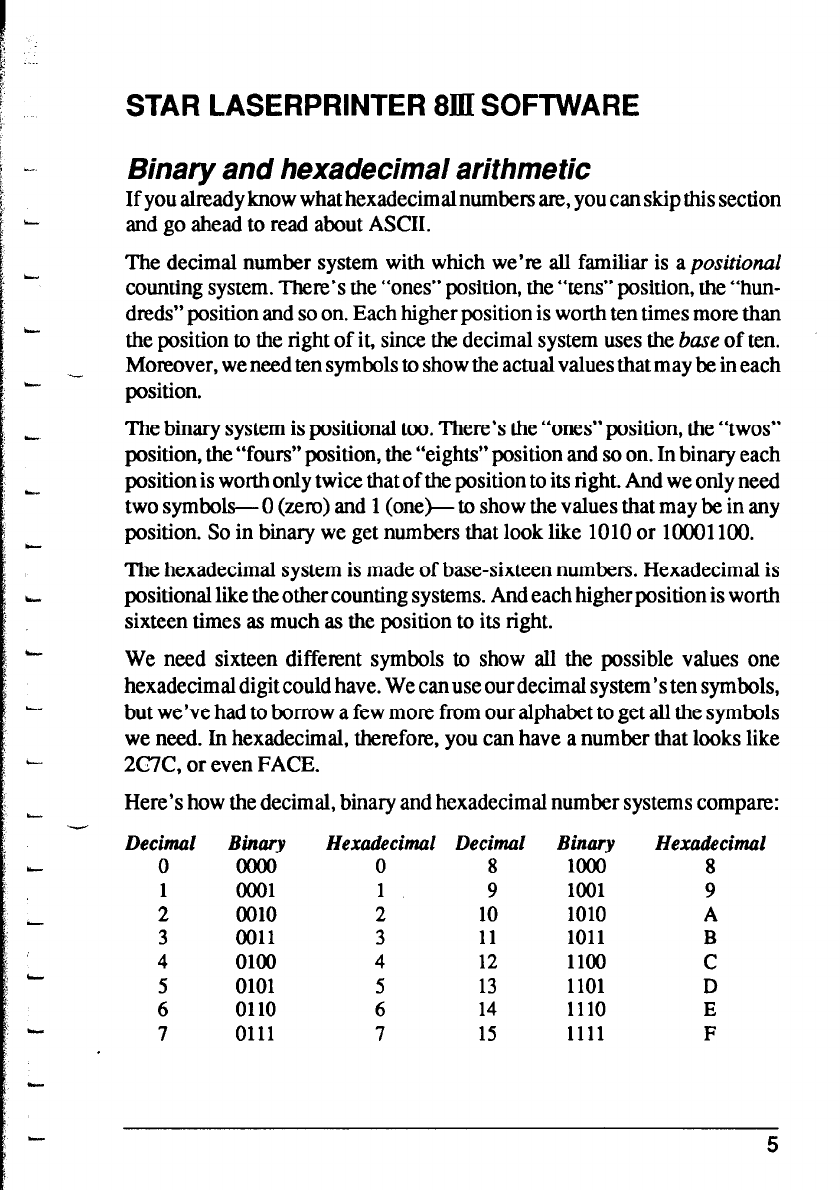
STAR LASERPRINTER 8JlI SOFTWARE
Binary and hexadecimal arithmetic
If you already know what hexadecimal numbers am, you can skip this section
and go ahead to read about ASCII.
The decimal number system with which we’re all familiar is a positional
counting system. There’s the “ones” position, the “tens” position, the “hun-
dreds” position and so on. Each higher position is worth ten times more than
the position to the right of it, since the decimal system uses the base of ten.
Moreover, we need ten symbols to show the actual values that may be in each
position.
The binary system is positional too. There’s the “ones” position, the “twos”
position, the “fours” position, the “eights” position and so on. In binary each
position is worth only twice that of the position to its right. And we only need
two symbols- 0 (zero) and 1 (one& to show the values that may be in any
position. So in binary we get numbers that look like 1010 or 10001100.
The hexadecimal system is made of base-sixteen numbers. Hexadecimal is
positional like the other counting systems. And each higher position is worth
sixteen times as much as the position to its right.
We need sixteen different symbols to show all the possible values one
hexadecimal digit could have. We can use our decimal system’s ten symbols,
but we’ve had to borrow a few more from our alphabet to get all the symbols
we need. In hexadecimal, therefore, you can have a number that looks like
2C7C, or even FACE.
Here’s how the decimal, binary and hexadecimal number systems compare:
Decimal
0
1
2
3
4
5
6
7
Binary
0001
0010
0011
0100
0101
0110
0111
Hexadecimal
Decimal
Binary
Hexadecimal
0 8 loo0
8
1
9
1001
9
2 10 1010 A
3
11 1011
B
4 12 1100
C
5 13
1101
D
6
14 1110 E
7 15
1111 F
5


















